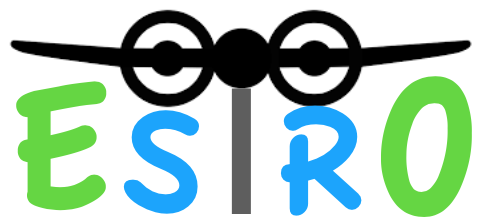Clean Sky 2 programme aims at lowering pollutant emissions and at reducing perceived external noise by integrating breakthrough technologies in full-scale demonstrators such engines, wings, embedded systems, by developing new, more ecological and more efficient manufacturing processes and by improving the aircraft design models both at the component and at system level. Clean Sky2‘s objectives are however more than environmental as they address societal needs while enhancing mobility and achieve global competitiveness while strengthening European industrial leadership in aeronautics in Europe. ESTRO will contribute to the achievement of Clean Sky 2 goals by providing support to CS2- REGIONAL domain driven by Leonardo Aircraft by performing the experimental wind tunnel test campaign, at low and high Mach numbers, of the elastic NLF wing of the TP90 A/C equipped of morphing devices for high lift and load control and by predicting numerically the aerodynamic and laminar flow performance at flight Reynolds numbers. The outcome will provide results and knowledge for future comparison with other projects involving wind tunnel experiments, flight tests and computational results. ESTRO, carrying out an experimental campaign in a wind tunnel, will provide experimental data which will constitute a long-lasting knowledge base for future investigations and projects. Numerical analysis and extrapolation of such data will add insights, increasing the output value of the project. The activities proposed by the ESTRO consortium will contribute to support the CS2-REGIONAL plan driven by Leonardo Aircraft and will find implementation in the future Regional Turboprop aircraft. The outcome is expected to provide results and knowledge (in terms of theory and numerical tools) for future comparison with other projects involving wind tunnel experiments, flight tests and computational results. This will let Leonardo Aircraft improve the procedure for the design of smart wings of the next generation of turboprop aircraft by better predicting laminar flow performance, LC&A effectiveness, loads and hinge moments of control surfaces in transonic conditions (before flight tests) and aerodynamics characteristics.
As mentioned, ESTRO is targeting to experiment the wind tunnel model delivered by the TM (through another consortium that is designing and manufacturing the model) in a selected laminar wind tunnel. A wind tunnel test campaign of a 1/3 scale wing model of the advanced Leonardo Turboprop aircraft will be carried out with the objective to generate the aerodynamic coefficients, to estimate the laminar flow robustness, to measure the loads and hinge moments and finally evaluate the LC&A effectiveness under the wing elastic deformation. The wing during the WT testing will be equipped only with dummy nacelles without propellers. A successive numerical test campaign will extrapolate the WT data to flight conditions by evaluating also the effects of the propeller wake on the laminar flow extension. Furthermore, the laminar flow robustness to surface imperfections (such as gap, step, waviness, roughness) but also to wing deformation, nose droop deformation (in the case that the TM provides an accurate elastic model of the wing equipped of nose droop mechanism) morphed devices will be evaluated by using suitable and sophisticated numerical tools (such as receptivity and ray theory based on linear stability). At this end, ESTRO will design and perform:
- a laminar wind tunnel test campaign in a selected facility
- an accurate numerical test campaign to extrapolate the WT to flight conditions
- the WT analysis
The technically ambitious part required here is to optimize the huge number of wind tunnel tests in order to remain within the budget limit and the prediction of the advanced elastic wing performance to flight conditions taking into account the deformation of the smart devices installed in the wing. This involves, from one side, basically the design and optimization of the test matrix and on the other side, skilled partners able to compute the laminar flow extension and robustness in addition to the estimation of the effectiveness of the LC&A devices.
ESTRO has partner with strong expertise in preparing and conducting tests in large industrial wind tunnel (see Etriolla) and in the development and application of high fidelity and accurate and suitable numerical methods for CFD simulations, structural simulations (to estimate loads and hinge moments by accounting for the wing flexibility) and laminar flow robustness evaluation (sensitivity to roughness, waviness but also estimation of the potential laminar flow degradation due to the propeller wake, etc.). All features are available among the consortium partners. The latter are confident to meet successfully the demands of this topic.
The scope of the tests is quite ambitious, it covers laminar flow investigations, effectiveness of LC&A devices under the wing deformation, hinge moment measurements on control surfaces, morphed trailing flap, winglets and wing tip for improved aerodynamic performance and efficiency. Furthermore, numerical models beyond the state of the art are necessary to extrapolate the performance of the wing in flight conditions taking into account in addition to all the effects before listed also the effects on the laminar flow extension of the propeller wake.
